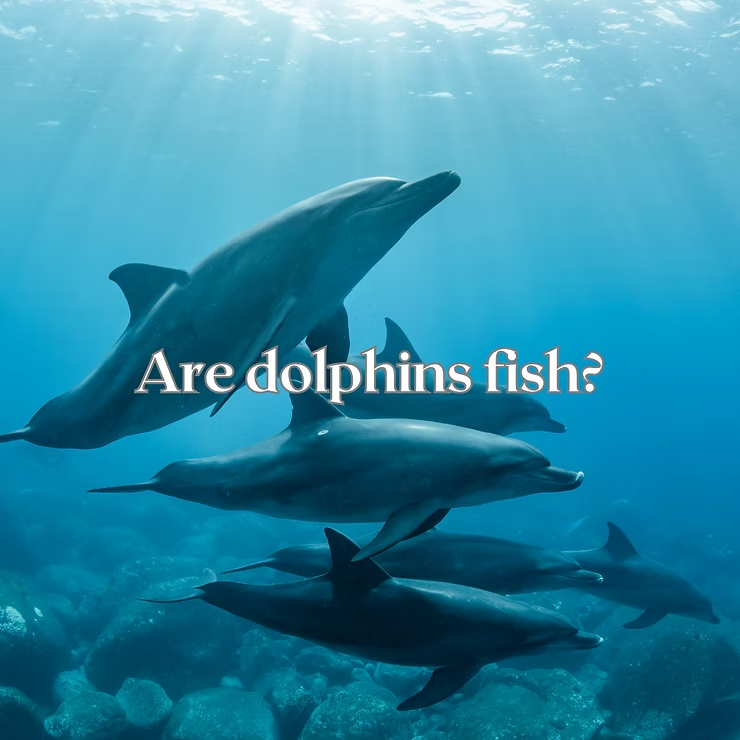Introduction
Dolphins have fascinated humans for centuries, often sparking curiosity about their true nature. Despite their popularity, a common misconception persists—many people assume dolphins are fish. In reality, dolphins are highly intelligent marine mammals with unique adaptations, complex social behaviors, and extraordinary communication skills. By exploring their biology, lifestyle, and cultural importance, we can better understand these remarkable creatures and why protecting them matters.
Are Dolphins Fish or Mammals?
Clearing Up the Misconception
Dolphins may live in the ocean and share physical similarities with fish, but they are mammals. They belong to the cetacean family, alongside whales and porpoises. Unlike fish, dolphins are warm-blooded, breathe air through lungs, and nurse their young with milk. These traits firmly classify them as mammals rather than fish.
Key Differences from Fish
- Reproduction: Dolphins give birth to live young and provide maternal care, while most fish lay eggs.
- Breathing: Fish extract oxygen with gills, whereas dolphins breathe air through blowholes.
- Thermoregulation: Dolphins maintain constant body temperature, unlike cold-blooded fish.
The Aquatic Lifestyle of Dolphins
Dolphins are perfectly adapted to life in the ocean. Their streamlined bodies and powerful tails allow them to swim at impressive speeds. Blowholes on top of their heads enable quick breaths at the surface, while their warm-blooded physiology helps them thrive in a variety of climates. Social by nature, dolphins live in pods that range from a handful of individuals to hundreds, offering protection, cooperation, and companionship.
Playful Behaviors
Leaping, wave-riding, and even playing with seaweed or bubbles are part of dolphin life. These playful actions strengthen social bonds, sharpen skills, and provide mental stimulation. Far from being just entertainment, play is an essential part of dolphin survival and culture.
Remarkable Adaptations
Echolocation and Anatomy
One of the most extraordinary adaptations of dolphins is echolocation. By emitting clicks and interpreting echoes, they map their environment, find prey, and communicate even in murky waters. Their anatomy further supports survival: dorsal fins aid balance, pectoral fins help steer, and tail flukes power swift movement.
- Dolphins can have up to 100 sharp teeth for catching fish.
- They can reach speeds of around 20 miles per hour.
- Some populations use tools, like sea sponges, to protect themselves while foraging.
Dolphin Communication and Intelligence
Dolphins are renowned for their intelligence, rivaling that of primates. They use a wide range of sounds, from whistles to clicks, to interact and coordinate with one another. Each dolphin has a unique “signature whistle,” functioning much like a personal name. Beyond vocalizations, dolphins use body language—such as fin slaps, leaps, and tail movements—to express emotion or assert dominance.
Social Structures
Pods are tightly knit groups where dolphins cooperate to hunt, care for calves, and defend one another. Within pods, social hierarchies exist, often based on age and size. Such complex societies require high levels of communication, memory, and problem-solving.
Dolphins in Culture and Conservation
Symbolism and Popular Appeal
Throughout history, dolphins have symbolized protection, wisdom, and friendship. In mythology, they were seen as guides for sailors, while today they appear widely in films, literature, and art as icons of freedom and intelligence.
Modern Challenges
Despite their revered status, dolphins face serious threats from pollution, overfishing, and noise disturbance. Captivity remains controversial, with many arguing that dolphins thrive only in the wild. Conservation efforts focus on marine sanctuaries, sustainable fishing, and ethical tourism to safeguard their future.
Conclusion
Dolphins are far more than playful sea creatures—they are intelligent mammals with deep social bonds, advanced communication systems, and cultural significance. Recognizing their mammalian nature helps dispel misconceptions and highlights their importance within marine ecosystems. By supporting conservation and respecting their habitats, humans can ensure dolphins continue to thrive for generations to come.

